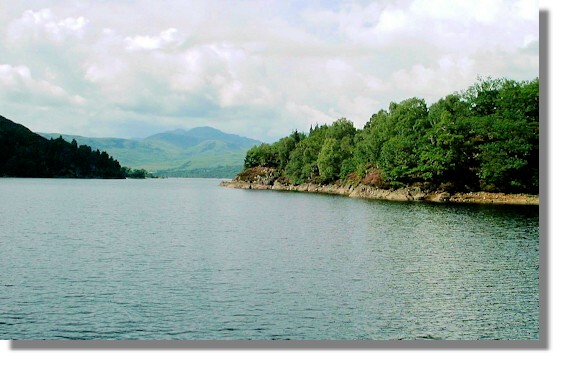
Loch Katrine's name may be derived from the Brythonic (a form of early Welsh) word "cethern" meaning "furies" possibly because of the many mountain streams which tumble down the mountain slopes. The Scots Gaelic word "cateran" later came to mean Highland robber, quite appropriate when you take into account the number of stolen cattle hidden in the area over the centuries. The MacGregor clan roamed this part of the country and Rob Roy MacGregor was born at Glengyle on the banks of the loch in 1671.
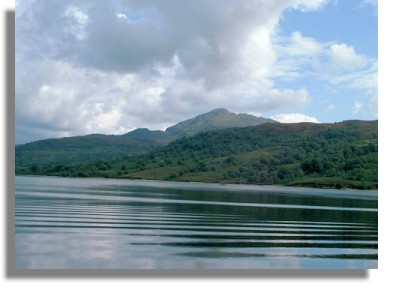
Loch Katrine is eight miles long and an average of one mile wide and flanked by mountains on all sides. There is a visitor centre at Trossachs Pier at the eastern end of the loch and another pier at Stronachlachar towards the western end. The steam ship Sir Walter Scott takes tourists on trips on the loch - the morning trip plies between Trossachs Pier and Stronachlachar while that in the afternoon is a shorter cruise of about an hour covers about half the length of the loch. There is also a road from Trossachs Pier to Stronachlachar but it is for walking, cycling and electric vehicles only (on hire for the disabled at the visitor centre).
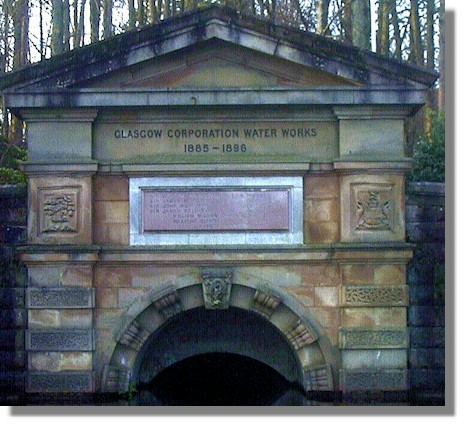
The reason for the control of traffic both on the loch and around it is that Loch Katrine is one of the major sources of water for the city of Glasgow. In the early 19th century, water of variable quality for the rapidly expanding city was from private wells distributed in large barrels. In a far-sighted project, the city built an 8ft-diameter aqueduct 26 miles in length from the loch to a reservoir on the outskirts of Glasgow and then distributed it by pipes across the city. The system was formally opened by Queen Victoria in 1859. The success of the project was seen a few years later when the next cholera epidemic broke out and Glasgow was relatively unaffected. The water travels along a large diameter pipe with no pumps to Mingavie just north of Glasgow using just gravity, and now delivers over 65 million Imperial gallons per day.
Oddly, most of the houses in nearby Milngavie and Bearsden do not get their water from Loch Katrine despite surrounding the reservoir as these houses are in East Dunbartonshire rather than Glasgow!
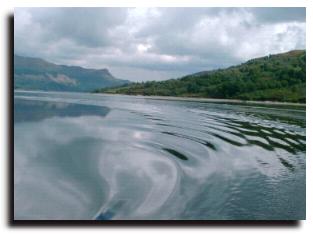
There has been a steam ship on Loch Katrine since 1843. But they had to be built elsewhere, cut into pieces and reassembled at the loch. The SS Sir Walter Scott was built in 1899 at Denny on the Clyde at Dumbarton, sailed up the river Leven to Loch Lomond, then dismantled and transferred to Loch Katrine. She is now the oldest surviving screw-steamer in regular service in Scotland. A diesel-powered replacement is unlikely because of the risk of contamination to the water. The engine room of the venerable ship is open for all to see and a feature is just how quiet the vessel is.
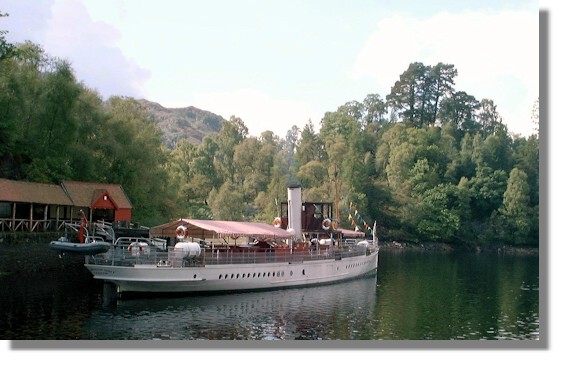
 My last trip on the Sir Walter Scott illustrated just how variable the Scottish weather can be. On the outward journey there were blue skies and sunshine. On the way back, heavy clouds came in and we had to make a dash for the self-service restaurant just before torrential rain began to fall. But at least there was the satisfaction of knowing that the rainwater would end up in the taps back home in Glasgow!
My last trip on the Sir Walter Scott illustrated just how variable the Scottish weather can be. On the outward journey there were blue skies and sunshine. On the way back, heavy clouds came in and we had to make a dash for the self-service restaurant just before torrential rain began to fall. But at least there was the satisfaction of knowing that the rainwater would end up in the taps back home in Glasgow!




